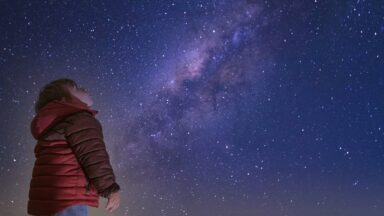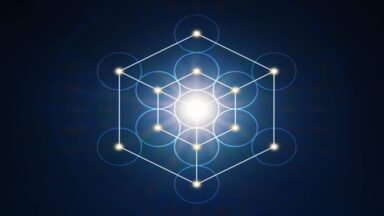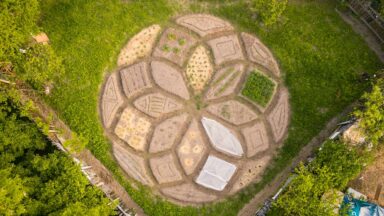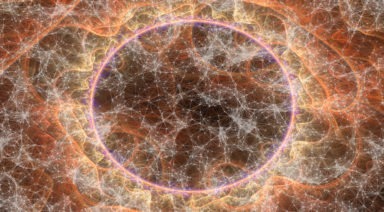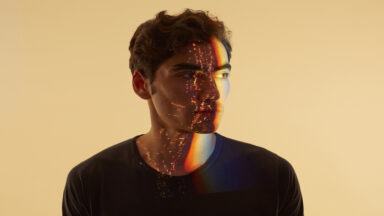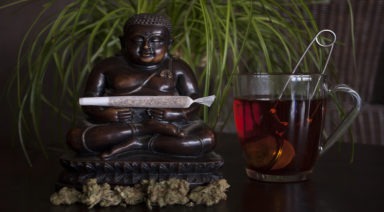Part One: It’s Hard to Realize Global Consciousness, All By Yourself

Have you ever wondered about “global consciousness” — whether or not it’s real…whether or not it’s alive? Well, you’re not alone. You’re casting your query into a field of imagination that’s simultaneously being occupied by millions of other people’s minds. In that respect, your mind, and all of those other minds, are essentially behaving like one mind. So then we ask ourselves this: Is that ‘one mind’ the product of every different individual’s brain acting the same way, or is it truly the same thought arising simultaneously from a single source? Is this a question that everyone has about global consciousness independently, or one that the Earth itself is posing through us? The answers may surprise you.
Are you a truth seeker? Start your journey now.
The most direct and personal realities of global consciousness may be the most obvious. Just thinking. Just being. We all think pretty much the same thoughts, and feel pretty much the same feelings. We’re all expressing a conscious intelligence that has either arisen through this layer of life on Earth, and comes through us, or that exists everywhere we can see (and everywhere we can’t), and we somehow access.
Where Does Global Consciousness Come From?
As far as humankind has come so far (and as far as it goes), there really is no beginning to the idea of global consciousness, nor will there be any end to it. Ironically, the ‘smarter’ we become as a species, the more detached we may have become from the intuitive intelligence that’s alive in our greater shared consciousness — particularly when it comes to the arising crises we face in sustaining life, as we know it, on this planet. Perhaps it’s time we began thinking– as one–about it.
“The Earth, its life, am I…
The Earth, its body is my body…
The Earth, its thoughts are my thoughts…
The Earth, its speech is my speech.”
From a Navajo chant
While our indigenous predecessors have always had an inherent understanding of a benevolent, shared source and intelligence alive in the world (as with “The Great Spirit”), it seems modern thought has had to take the long way around. From the postulations of the Greeks and their mythological goddess of the Earth, Gaia, the child of [the] Aether (and provider of our hosts origins), to the spiritually-tinged rationalism of Immanuel Kant’s “Transcendental Idealism,” or Émile Durkheim’s sociological “collective consciousness,” all the way to the scientific concept of Gaia as promoted by Buckminster Fuller (and popularized by Stewart Brand in The Whole Earth Catalog), and hypothesized by the chemist James Lovelock (back in 1970) — where the earth is a dynamic, self-regulating entity that must serve as the source of our proper inspiration and purpose — the course of modern thought has been leading us back to the informed mysticism of our native forefathers. Now, it would seem, all the Earth needed was a face.
The Godfather of Global Consciousness
The twentieth-century French paleontologist, philosopher, and Jesuit priest, Pierre Teilhard de Chardin, was so far ahead of his time in his understanding of the profound interconnectedness of the world to all of its geological, biological, anthropological, and theological (psycho-spiritual) parts, that the Catholic Church, profoundly disturbed by his radical departures from church dogma, wouldn’t allow the publication of most of his books until after his death in 1955.
Teilhard proposed that following the creation of the geosphere of inanimate matter, and the biosphere of budding, blooming, swimming, crawling, reproducing life that, evolutionarily, what he called the “noosphere” — a layer, or field, of conscious human intelligence — had developed on the surface of the Earth, composed not only of the evolutionary intelligence of human beings, but also of our spiritual potential, as would be demonstrated by our ever-expanding, emergent capacity for simultaneous global consciousness.
“Each of us is…linked by all the material, organic, and psychic strands of his being to all that surrounds him….By means of all created things, without exception, the divine assails us, penetrates us, and molds us. We imagined it as distant and inaccessible, when in fact we live steeped in its burning layers.”
Teilhard de Chardin
By what appears counterintuitive, he first realized a kind of cognitive identity of this conscious layer of the planet through his geological fascination with rocks, and then, as a paleontologist, seeing people as an expression of this intelligence of the Earth, and finally stating that “the Earth has the face of a cosmic person.” He went on to suggest that eventually, we would reach a singularity of global consciousness that he called “The Omega Point.” In this way, he may have simply been circling back to the philosophies of our indigenous ancestors, as well as other ancient voices of wisdom.
Panpsychism, The Vedas, and “The Quantum Field”
This concept of what’s called panpsychism — the idea that consciousness exists everywhere and in everything — has gotten more and more support (even from the scientific community) as our capacity for observation has increased. Looking to outer space, what had at first been thought to be more stars were discovered to actually be more galaxies. Looking to inner space, as we explore into the nature of subatomic matter, we also find that into whatever extremely tiny corner consciousness can shine its light, there is always more matter to discover. It’s as though consciousness energizes and animates the material at every level of observation we can muster (as in quantum physics). It’s as though consciousness occupies space, and supplies the actual life within all matter.
“Wherefrom do all these worlds come? They come from space. All beings arise in space, and into space they return: space is their beginning…and their end.”
The Chandogya Upanishad 1.9.1
The most reliable and comprehensive description of the nature and role of “cosmic consciousness” in our apparent reality, as well as being remarkably accurate precursors to the principles of quantum physics, are the Hindu Vedic texts, such as the Upanishads and the Bhagavad Gita (spoken from the fourth millennium BCE, written from the first millennium BCE, roughly). They describe Brahmin (God) as infinite being and consciousness, and the source and essence of the manifestations of purusha, which is spirit, and prakriti, which is matter, in all its ever-changing forms. Everything, animate and inanimate, is Brahmin, which also manifests as Hiranyagarbha — the “world soul.”
“In all the world, there is no…framework…in which we can find consciousness in the plural…we construct [this] because of the temporal plurality of individuals, but it is false…The only solution to this conflict…lies in the ancient wisdom of the Upanishad.”
Erwin Schrödinger
The world of inner space was so well-described by these ancient texts, that the fathers of modern quantum physics, Niels Bohr, Erwin Schrödinger, Max Planck, and Werner Heisenberg were all huge fans of the Vedic scripture, including the Upanishads and the Bhagavad Gita. In the Vedas, they found not only a clear understanding of the magical realities that their new discoveries revealed, but also the earliest answers to what’s called “The Hard Problem” of quantum physics, that is, how does consciousness inhabit inanimate matter? How does anything, including the Earth and all of its occupants, become alive?
Join me in Part Two, as we take a quantum look at how the miracle of consciousness inhabits and energizes every aspect of our reality, from the actual, measurable evidence of the global mind, to the crazy mechanisms that just may make it all possible; and on to what it means–and can mean to each and every one of us–as we realize our instantaneous connections to the incredible, intelligent source of everything.
What Are Indigo Children and How to Identify Them?
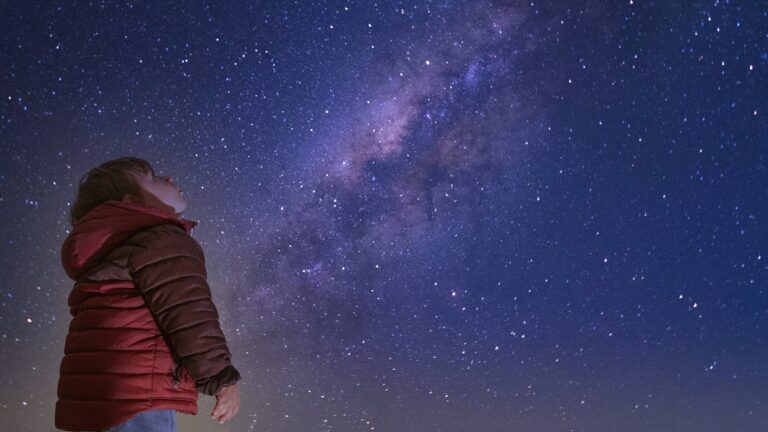
Indigo children are special beings with a unique and powerful spiritual mission. They are attributed with deep intuition and psychic abilities that make them stand out. In this article, we explore in detail what indigo children are, where the concept comes from, and how to recognize them.
Table of Contents
- What Are Indigo Children?
- History and Origin of the Concept
- 10 Common Traits of Indigo Children
- Types of Indigo Children
- Challenges and Common Issues of Indigo Children
- How to Identify an Indigo Child
- Differences Between Indigo, Crystal, Rainbow, and Diamond Children
What Are Indigo Children?
Indigo children are considered a new generation of human beings with a greater spiritual connection and a clear mission to transform society. This concept originated from the observation of certain children born from the 1970s onward, who showed a unique combination of abilities and characteristics that clearly set them apart from their peers. They are called “indigo” because of the predominance of indigo blue in their aura.
These children often stand out for their high emotional sensitivity, creativity, and strong intuitive abilities. They are believed to be old souls who have the mission to challenge established norms and promote positive change in the world. Their purpose is to pave the way for a more just, peaceful, and harmonious society by questioning and transforming outdated societal structures.
The mission of indigo children comes with significant challenges. Their deep sensitivity and perception allow them to see and feel the injustices and imbalances of the world very intensely, which can lead them to experience frustration and disappointment when they encounter resistance to change. However, their determination and sense of purpose drive them to move forward and fulfill their mission.
History and Origin of the Concept
The term “indigo child” was popularized by parapsychologist and author Nancy Ann Tappe in the 1970s. Tappe observed that many children born from that period had a predominantly indigo-blue aura, which led her to develop the theory that these children had special spiritual characteristics and missions. According to Tappe, these children possessed a higher consciousness and were destined to change the course of humanity.
Over time, the idea of indigo children expanded and was adopted by various spiritual and metaphysical schools of thought. In the 1990s, the books by Lee Carroll and Jan Tober contributed significantly to the spread of this concept. The authors described a series of traits and behaviors that identified these children and suggested that their purpose was to lead a global shift toward greater spiritual and social awareness.
Today, the concept of indigo children remains an important part of many spiritual communities and has expanded to include the later generations of crystal and rainbow children, each with their own characteristics and specific missions in the spiritual evolution of humanity.
10 Common Traits of Indigo Children
Indigo children exhibit distinctive characteristics that reflect their spiritual mission and purpose in the world. Below are ten traits that characterize these unique beings:
- Spiritually awakened: From an early age, they feel a connection to something greater. They sense they have a special mission.
- Sense of purpose: They are confident that they are here for an important reason. This conviction drives them to act with confidence.
- High expectations: They set high standards for themselves and others. This can make interpersonal relationships challenging.
- Strong intuition: They trust their perception and can often foresee events. Their intuition guides them in decision-making.
- Question authority: They are rebellious and skeptical of established norms. Their inclination to question authority and established rules challenges the structures they consider unjust.
- Desire to change the world: They seek to transform outdated structures. They are drawn to topics related to social justice, ecology, and human rights, promoting new ways of thinking and living.
- Creativity: They use their artistic talent to express their visions. Their art inspires and raises awareness in others.
- Agents of change: They identify social problems and seek innovative solutions. They work tirelessly to improve society.
- Sense of not belonging: They often feel different from their peers. They may experience a sense of isolation.
- Intense passion: Their energy and fervor are driving forces for change. They can be overwhelming but also highly motivating.

Types of Indigo Children
There are different types of indigo children, each with a particular set of abilities and approaches to fulfill their mission on Earth. These types reflect the diverse ways in which indigo children can influence the world.
- Artists: They use their creativity to inspire and raise awareness in others. Their art often carries deep and transformative messages.
- Conceptuals: Focused on innovating and improving systems, they seek more efficient and fair ways to organize society. They are often inventors and strategic thinkers.
- Humanists: They have a deep desire to help others and improve humanity. They work in fields such as education, healthcare, and human rights.
- Interdimensionals: They possess advanced psychic abilities and a profound spiritual connection. They can act as bridges between dimensions and offer new perspectives on reality.
Challenges and Common Issues of Indigo Children
Indigo children, due to their sensitivity and unique worldview, face several challenges in daily life. One of the most common issues is the frustration they feel when confronted with systems and structures they consider unjust or ineffective. Their desire to change the world and the resistance they encounter often lead them to experience high levels of stress and disappointment.
Additionally, their tendency to question authority and established norms can lead to conflicts with authority figures, such as parents and teachers. This rebelliousness, although an integral part of their mission, can result in behavioral problems and difficulties in structured environments like school. Indigo children may feel misunderstood and isolated because of their different perspectives and values.
Another significant challenge is feeling overwhelmed by their own emotions and those of others due to their high emotional sensitivity. They often have great empathy and an innate ability to perceive the emotions of others, which can result in anxiety, depression, or even physical symptoms such as headaches or digestive issues. It is important that indigo children receive emotional support and tools to manage their sensitivity in a healthy way.
How to Identify an Indigo Child
Identifying an indigo child can be a subtle task that requires observing certain distinctive behaviors and attitudes. A significant indicator is their inclination to question authority and established rules. From an early age, these children show a deep need to understand the reasons behind rules, rejecting the idea of accepting something simply because “that’s the way it is.”
Another way to identify them is through their interests and passions. Indigo children are often drawn to topics related to social justice, ecology, and human rights. They may express a strong desire to make the world a better place and actively seek ways to contribute to these changes—whether through art, writing, or activism.
Additionally, paying attention to their emotional sensitivity and intuition can be revealing. They often have great empathy and an innate ability to perceive the emotions of others. This deep emotional connection may manifest in their concern for the well-being of others and in their tendency to feel overwhelmed by their own emotions and those of others in emotionally charged environments. Recognizing and supporting these qualities can help parents and educators better understand and nurture an indigo child.
Differences Between Indigo, Crystal, Rainbow, and Diamond Children
Indigo, crystal, rainbow, and diamond children represent different spiritual generations, each with their own characteristics and specific missions. Indigo children began to emerge in the 1970s. They are known for their strong sense of purpose, rebelliousness, and desire to transform outdated social structures. Their energy is intense, and their mission is to pave the way for greater awareness and justice.
Crystal children appeared mainly in the 1990s. They are recognized for their peaceful and gentle nature, and for their ability to heal and connect deeply with others. Unlike indigo children, crystal children bring a calm energy and aim to promote harmony and peace in the world.
Rainbow children began to be born in the new millennium, around the 2000s. They possess vibrant and joyful energy, with great creativity and adaptability. Their mission is to balance and bring joy, acting as a bridge between past and future generations. They are highly intuitive and have an innate ability to forgive and show compassion.
Finally, diamond children are the most recent generation, beginning to emerge around 2008. They have an extremely high spiritual connection and an innate ability to manifest their desires and create new realities. They are visionaries with advanced psychic abilities, and their mission is to help humanity reach a higher state of consciousness.



